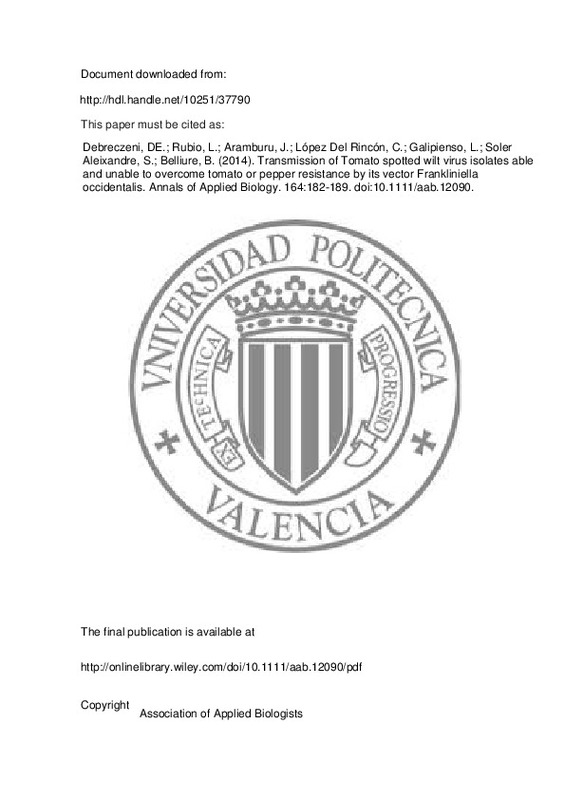JavaScript is disabled for your browser. Some features of this site may not work without it.
Buscar en RiuNet
Listar
Mi cuenta
Estadísticas
Ayuda RiuNet
Admin. UPV
Transmission of Tomato spotted wilt virus isolates able and unable to overcome tomato or pepper resistance by its vector Frankliniella occidentalis
Mostrar el registro completo del ítem
Debreczeni, DE.; Rubio, L.; Aramburu, J.; López Del Rincón, C.; Galipienso, L.; Soler Aleixandre, S.; Belliure, B. (2014). Transmission of Tomato spotted wilt virus isolates able and unable to overcome tomato or pepper resistance by its vector Frankliniella occidentalis. Annals of Applied Biology. 164:182-189. https://doi.org/10.1111/aab.12090
Por favor, use este identificador para citar o enlazar este ítem: http://hdl.handle.net/10251/37790
Ficheros en el ítem
Metadatos del ítem
| Título: | Transmission of Tomato spotted wilt virus isolates able and unable to overcome tomato or pepper resistance by its vector Frankliniella occidentalis | |
| Autor: | Debreczeni, Diana Elvira Rubio, L. Aramburu, J. Galipienso, L. Belliure, B. | |
| Entidad UPV: |
|
|
| Fecha difusión: |
|
|
| Resumen: |
[EN] Tomato spotted wilt virus (TSWV) causes serious diseases of many economically important crops. Disease control has been achieved by breeding tomato and pepper cultivars with the resistance genes Sw-5 and Tsw, respectively. ...[+]
|
|
| Derechos de uso: | Reserva de todos los derechos | |
| Fuente: |
|
|
| DOI: |
|
|
| Editorial: |
|
|
| Versión del editor: | http://onlinelibrary.wiley.com/doi/10.1111/aab.12090/pdf | |
| Código del Proyecto: |
|
|
| Agradecimientos: |
This work was supported by grants RTA2008-00010-C03 and FEDER, and ACOMP/2009/103 financed by INIA and Generalitat Valenciana, respectively. D. E. D. was recipient of a FPU predoctoral fellowship from the Spanish Ministry ...[+]
|
|
| Tipo: |
|







![[Cerrado]](/themes/UPV/images/candado.png)


